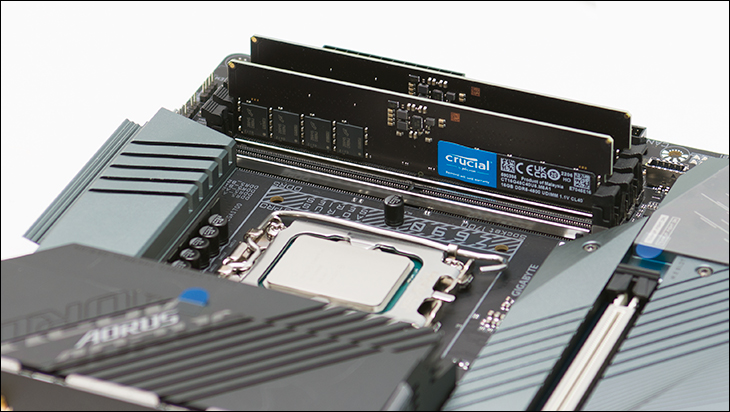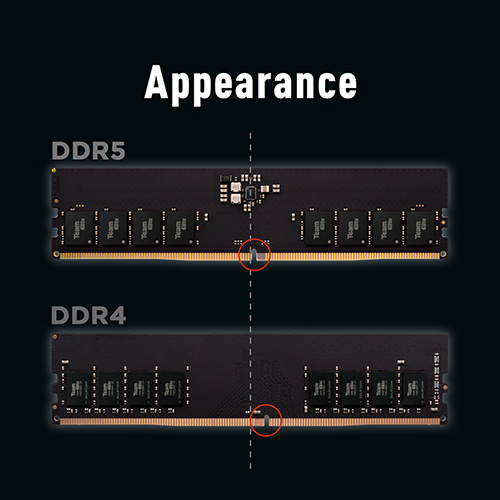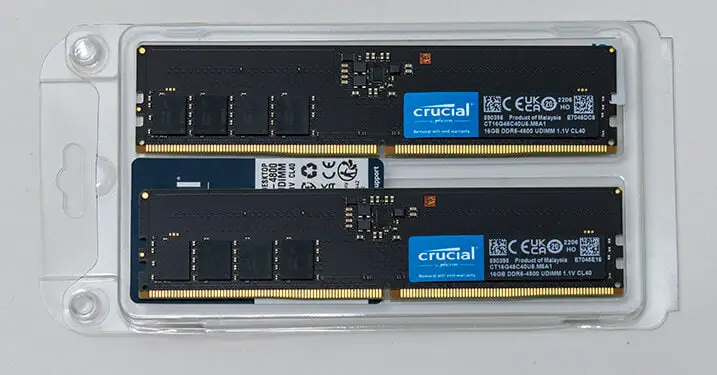
Another important change is lower voltage requirements of DDR5 when compared to DDR4. While yes a ‘mere’ 0.1 volt reduction does not sound like much it does have a noticeable real world impact, as it is a 8.7 percent reduction in electricity and thus 8.7 percent reduction in heat. Sure, this reduction will mostly be noticed by mobile computer owners rocking DDR5 systems and enterprise owners rocking an untold number of RAM in a server farm… but it is why the Crucial DDR5 kits and their nekkid DIMMS are not overly concerning. DDR4 arguably did not need heat spreaders and at stock voltage DDR5 certainly does not if your internal air flow is even halfway decent. For example, the DDR5 ICs used in Crucial’s DDR5 kits are rated for 0 to a massive 95 degree Celsius. So yes, even the gentlest of gentle breezes can keep them within their generous operating temperature range.

Going hand in hand with this decrease in heat output is on-board temperature sensors are now part of the JEDEC standard. Yes, many a kit of Crucial DDR4 RAM came with temperature sensors onboard, but now you can rest assured that no matter what DDR5 kit you buy it will have the ability to thermally limit itself in the event of system builder idiocy (and/or cooling fan failure).
One of the biggest change from DDR4 to DDR 5 (beyond speed increase and future potential performance) is how the DIMMS are fed a clean, stable diet of power. DDR4 relied solely on your motherboard and its abilities to properly regulate voltages. This lead to… variability with some boards being better than others at this critical, dare we say crucial, task. With DDR5, JDEC removed this variability by making it the DDR5 DIMMS job to feed its own RAM ICs the proper voltage. That is why if you look closely at a stick of DDR5 RAM you will see a little cluster of mosfets and a tiny controller – a Power Management IC (“PMIC”). Thus, the voltage provided to each DIMM will be more precise, and more stable than the motherboard method.
There certainly is a lot to like, or at least potential, when it comes to DDR5. Sadly, and much like when DDR4 arrived on the scene, it is not all sunshine and roses. Going hand in hand with a moderate to major increase in performance is an increase in latency. The absolute best DDR5 you can find (and can afford) has a CAS latency of 32. Most are in the 38-45+ range. Thankfully CL40 with DDR5 is not the same as CL40 with DDR4. Basically, the latency at a given CL rating is half of that same CL rating when comparing DDR5 to DDR4. For example, DDR5-4800 CL40 has the exact same 16.67ns latency as DDR4-2400 at CL20. DDR5-6400 CL40 has the exact same 12.5ns latency as DDR4-3200 at CL20…. and the promised DDR5-8400 kits? Even at a slow CL40 it still zips along at only ~9.5ns (or the same as DDR4-4800 CL20). So it will take time… but in in that time CL timings will fall right along with frequencies skyrocketing, making the latency penalty a non-issue (for most) even sooner. Hopefully.












